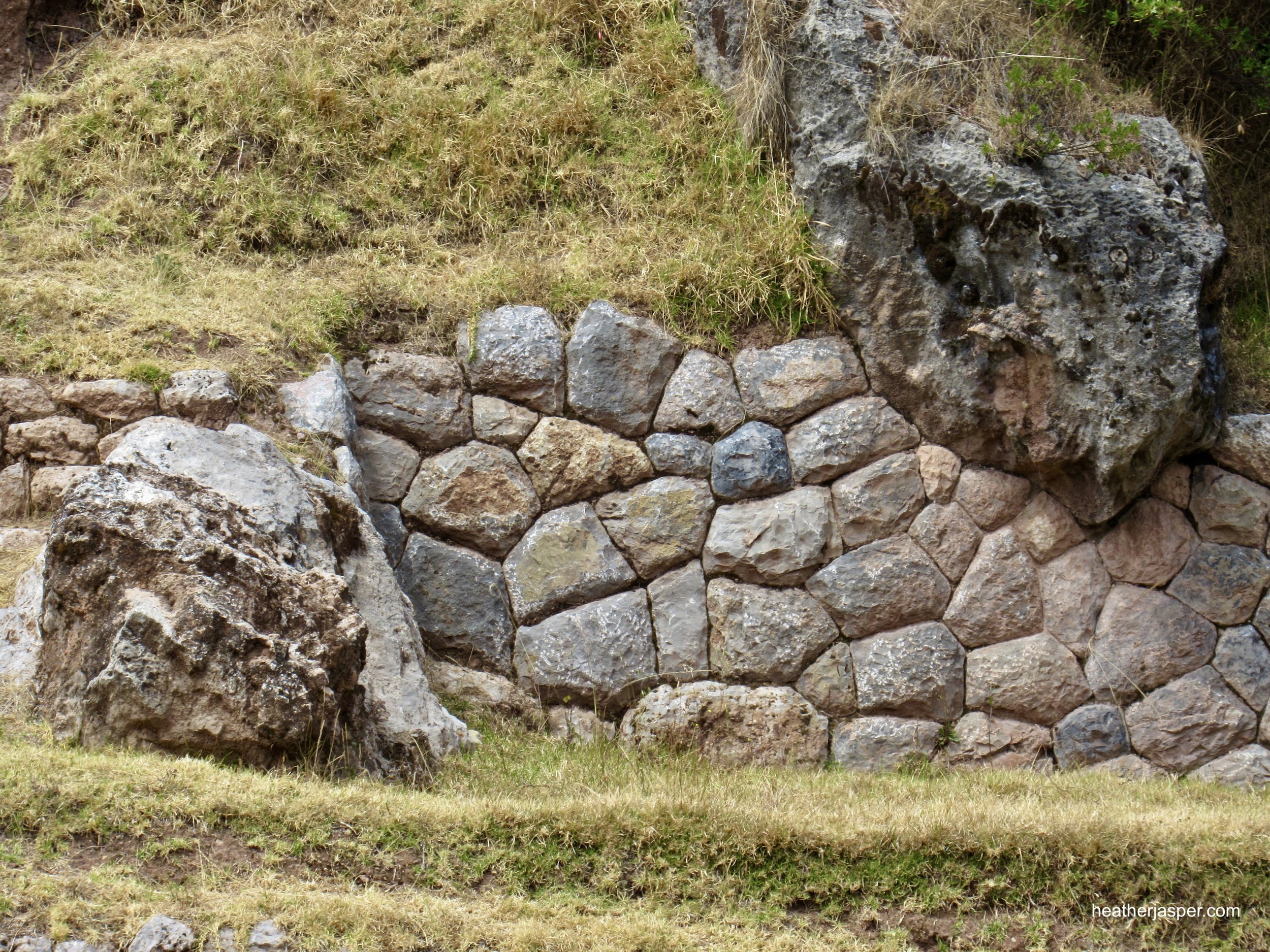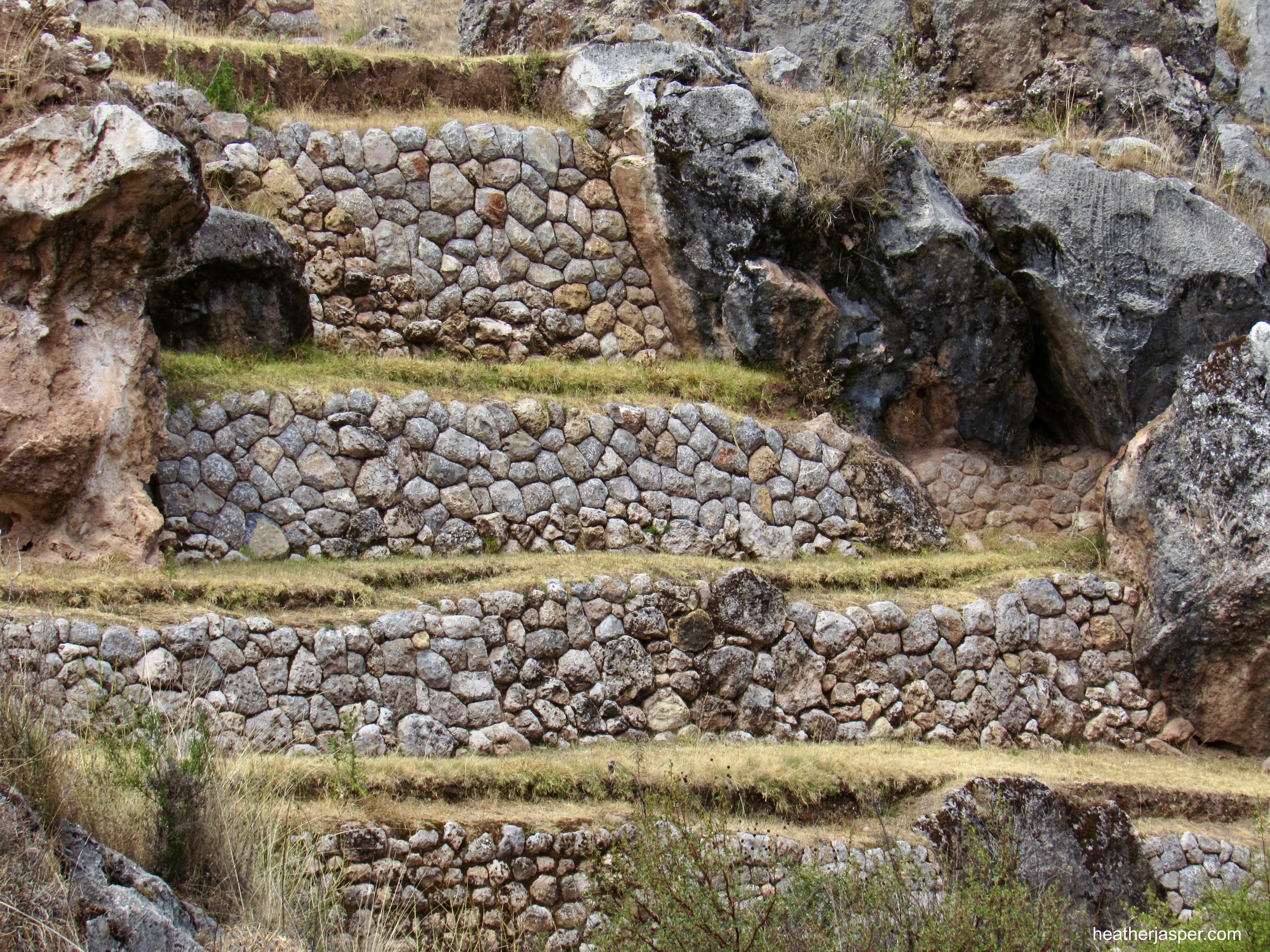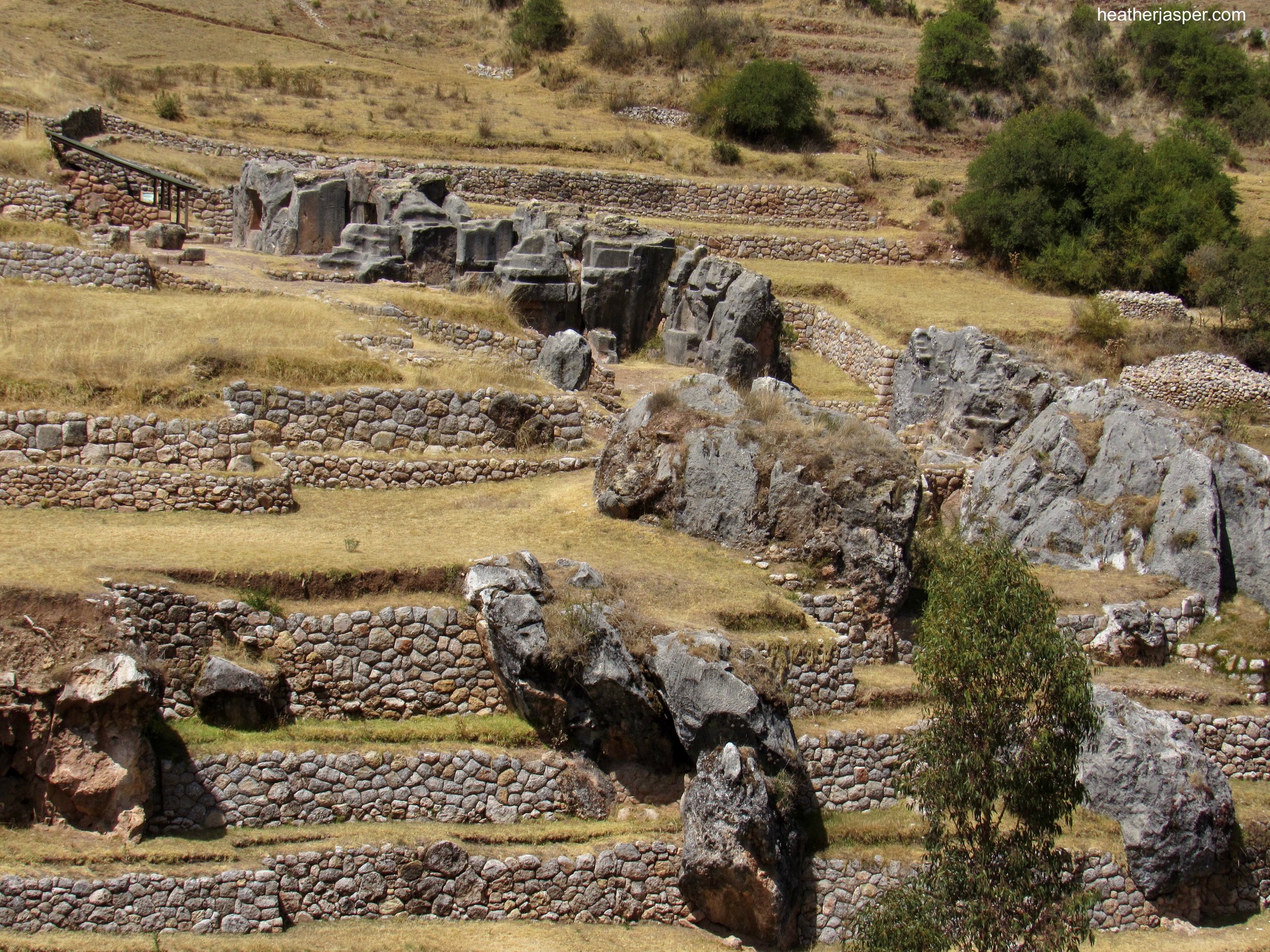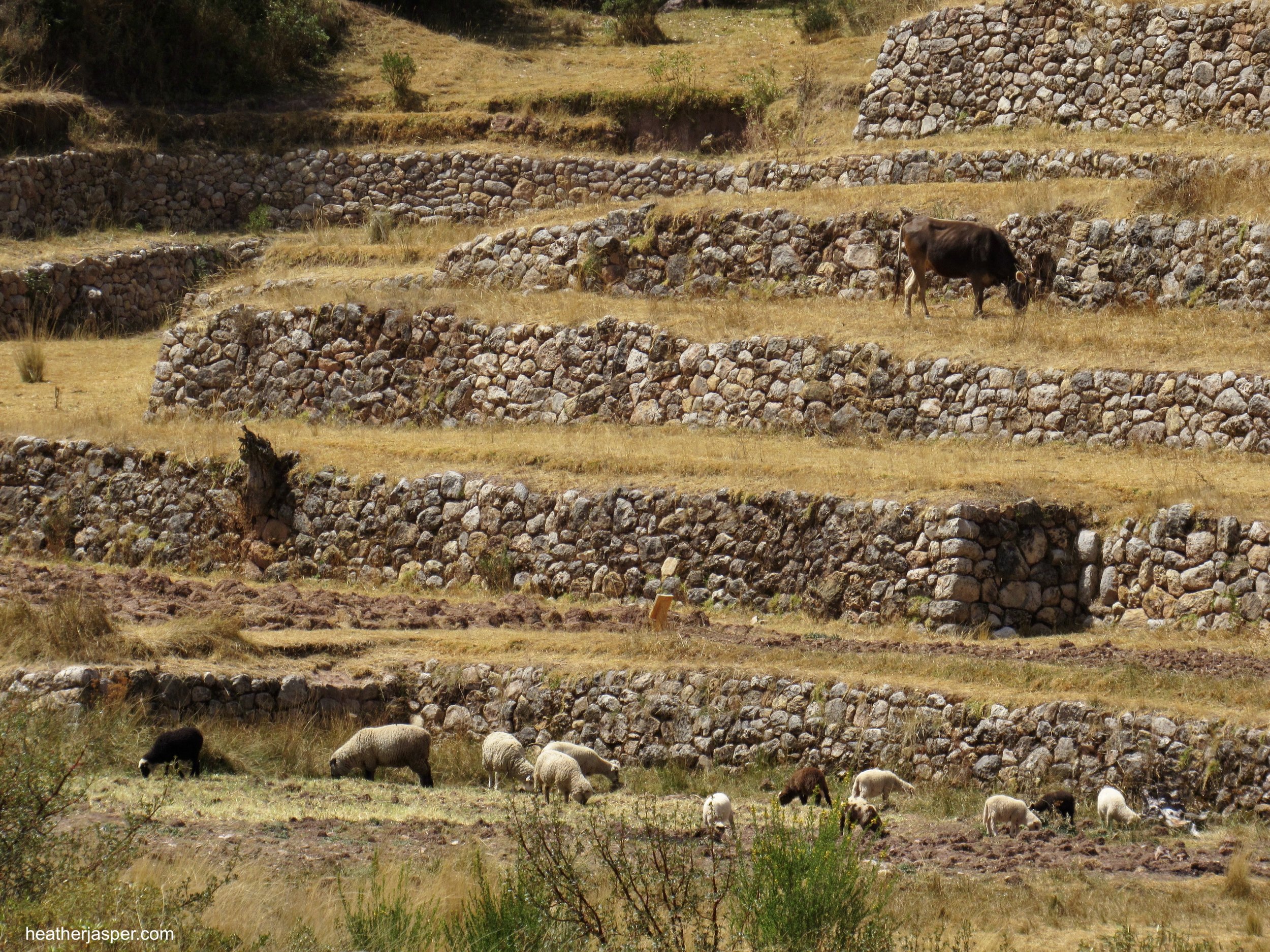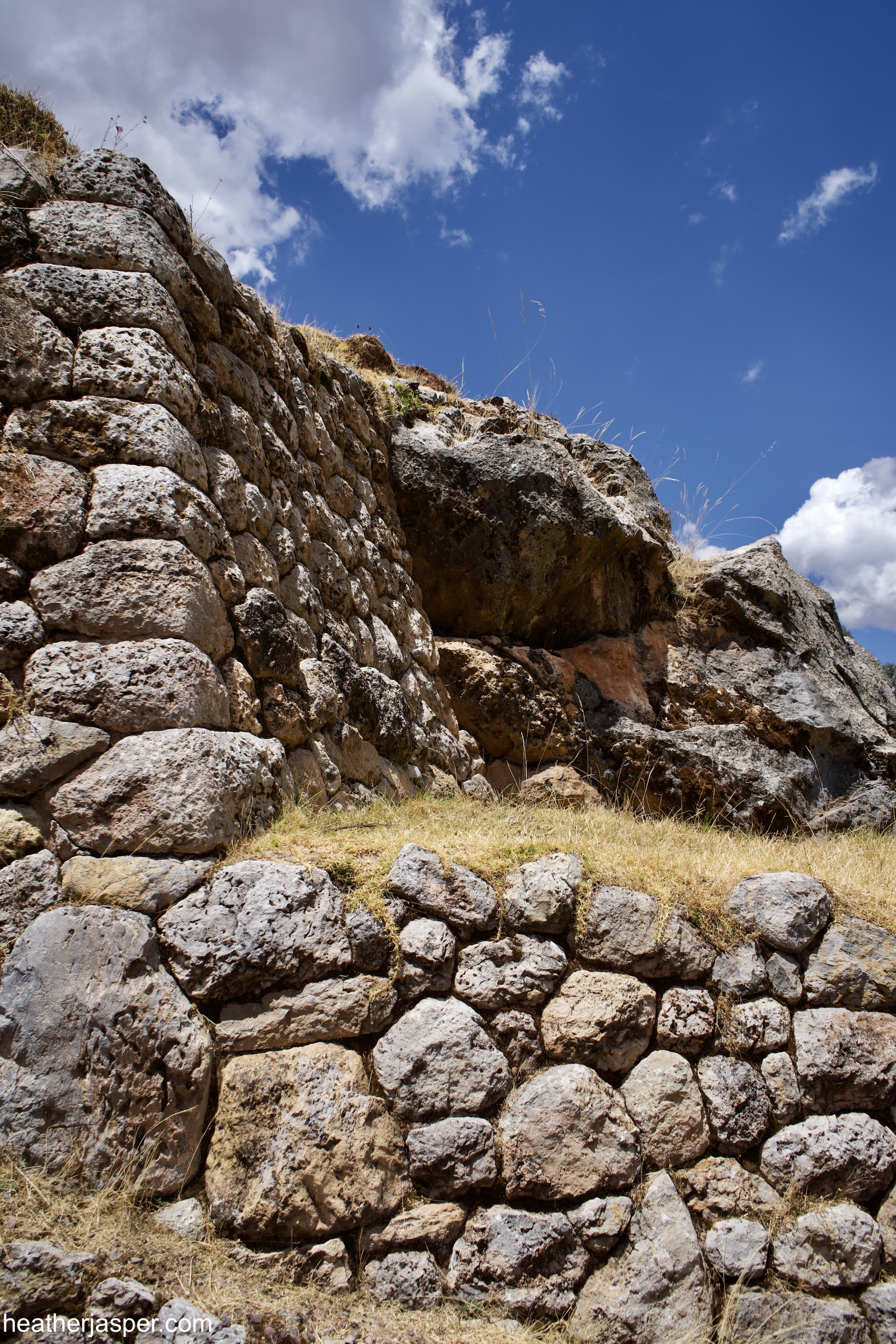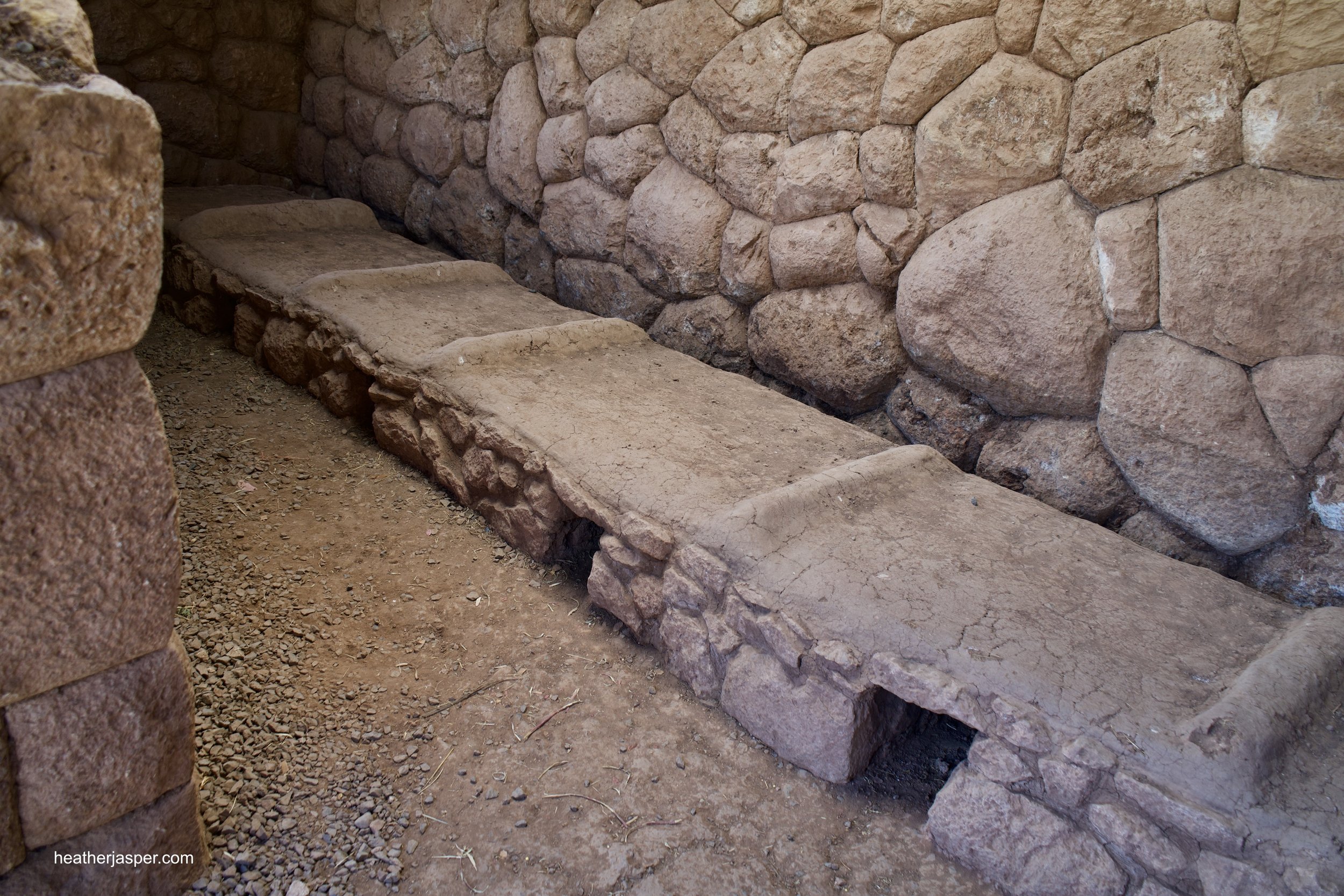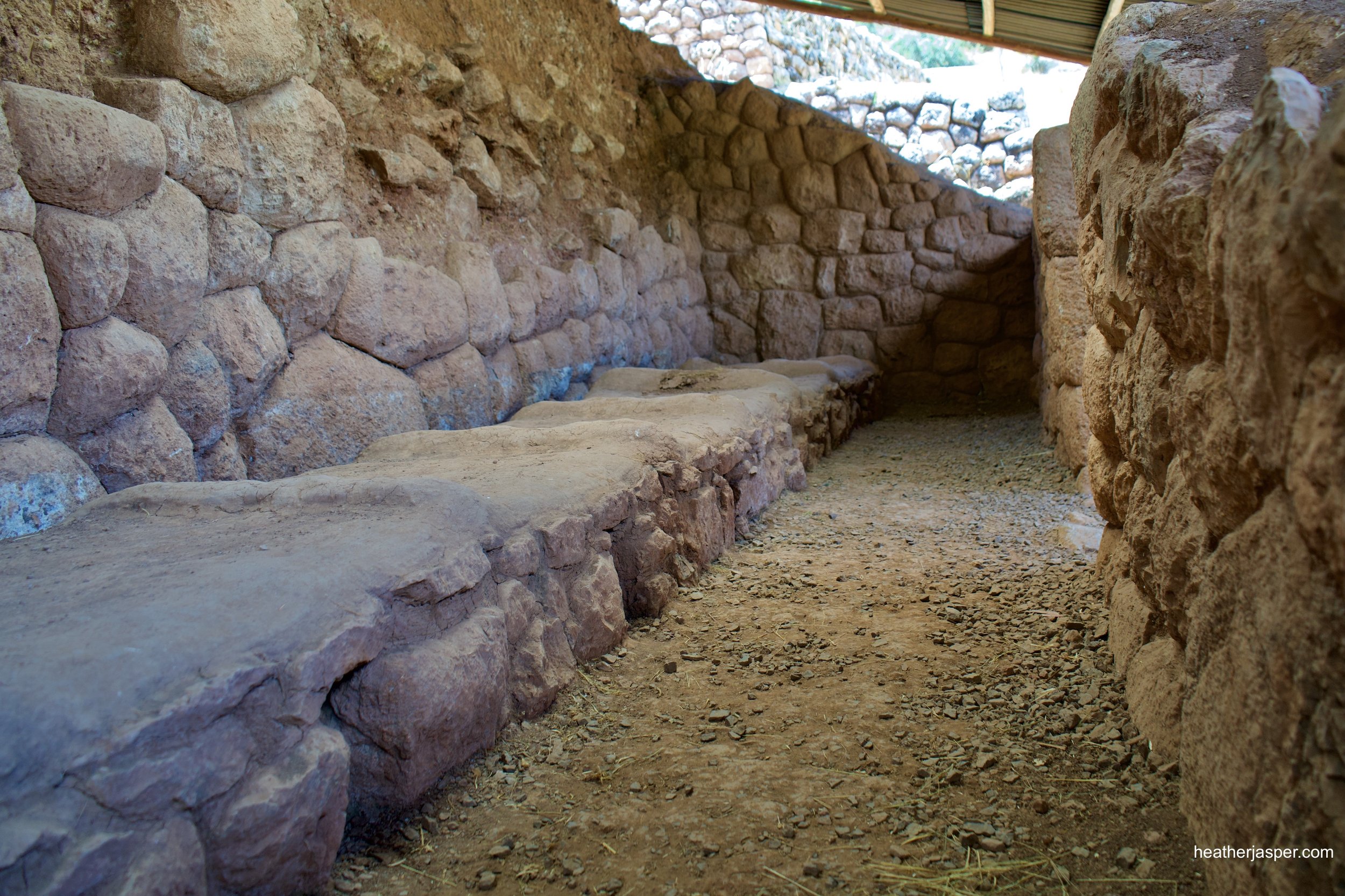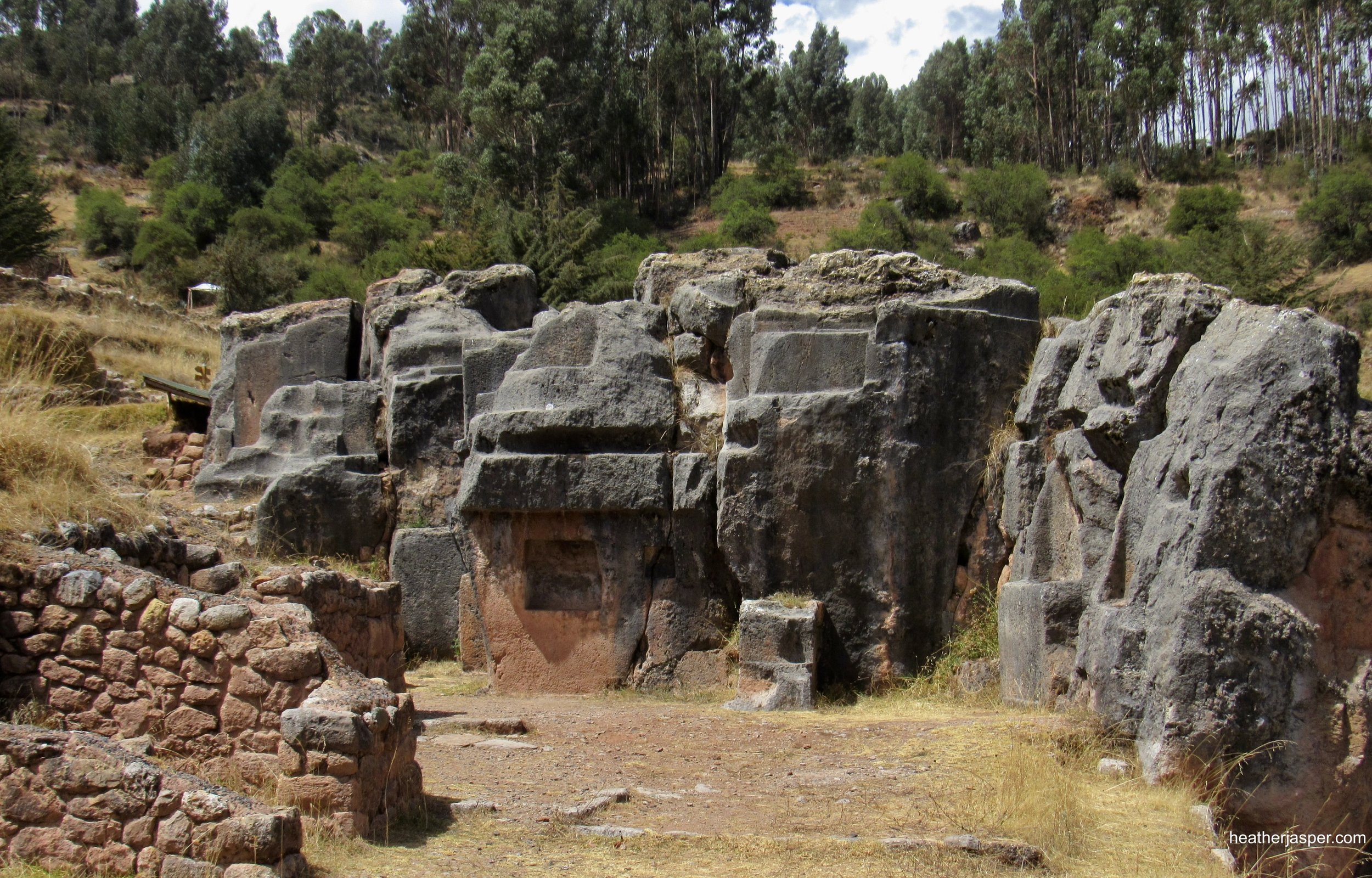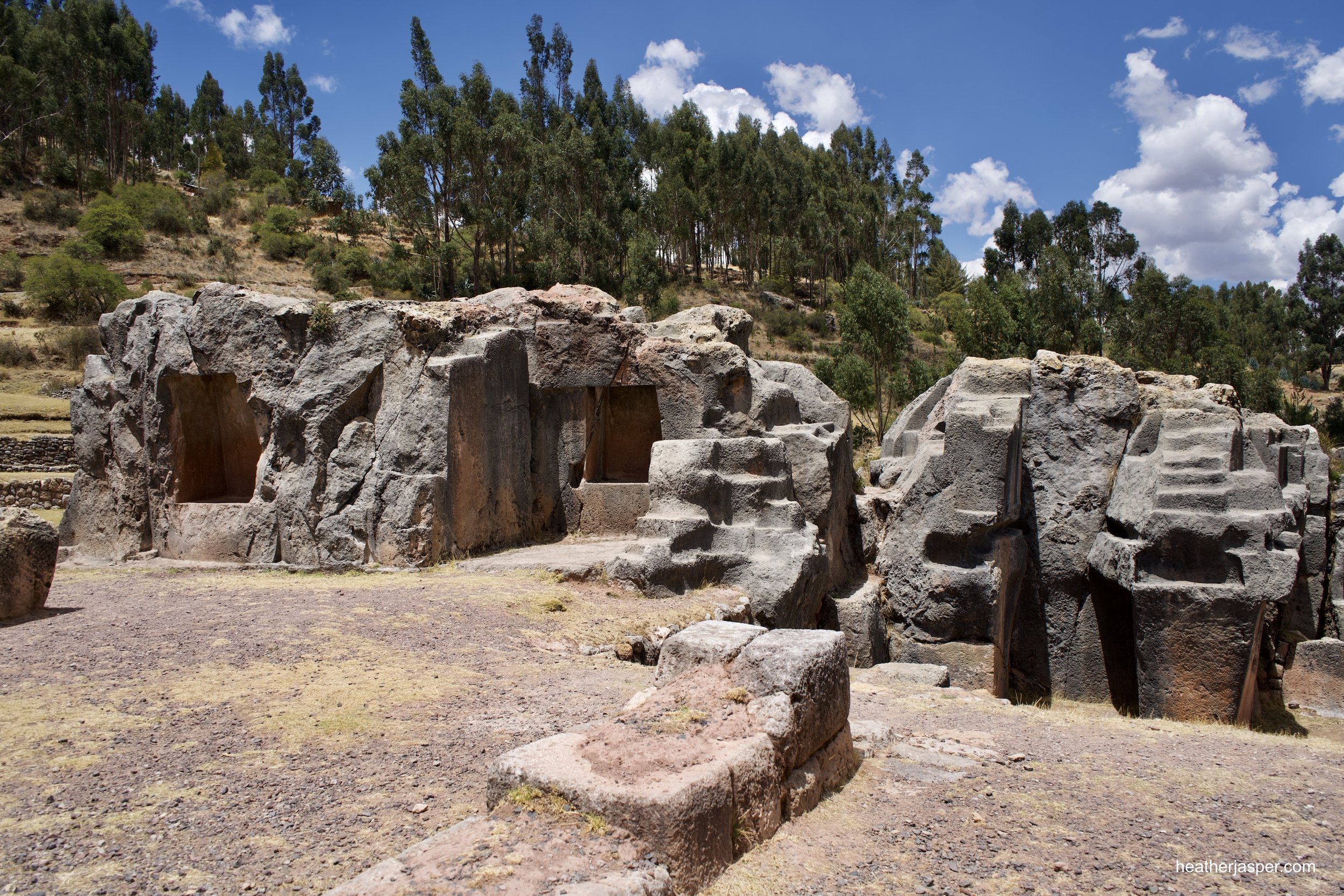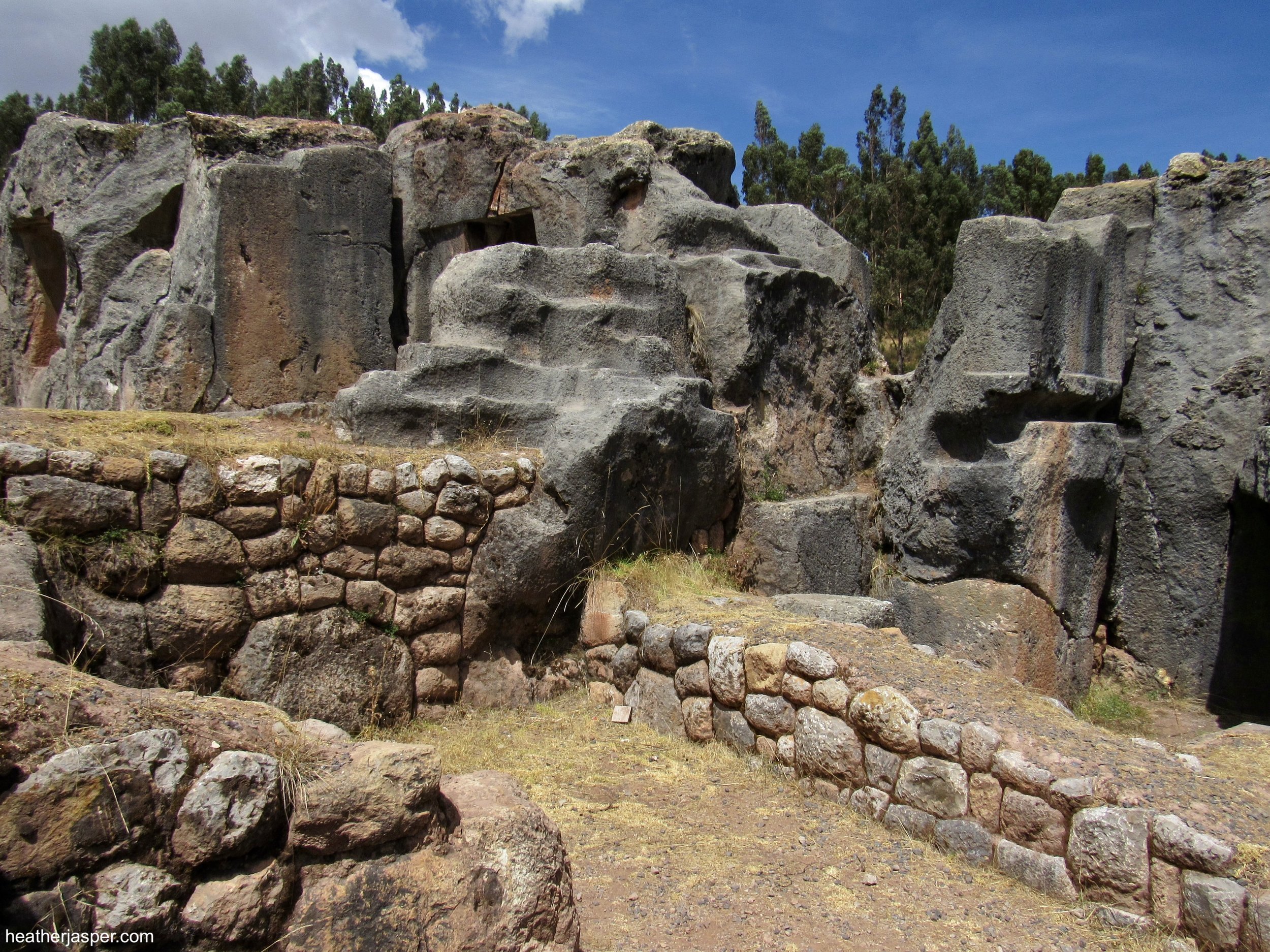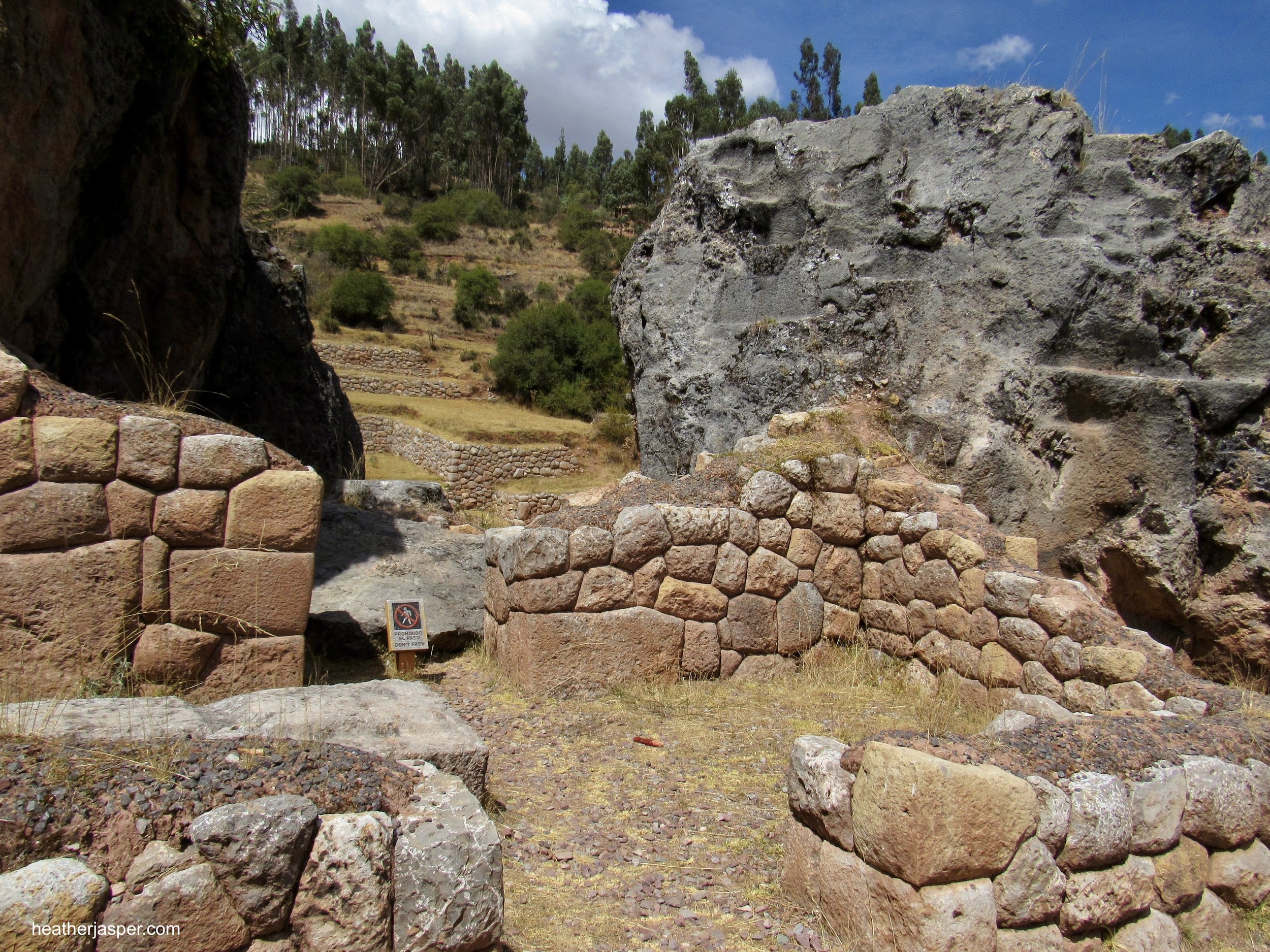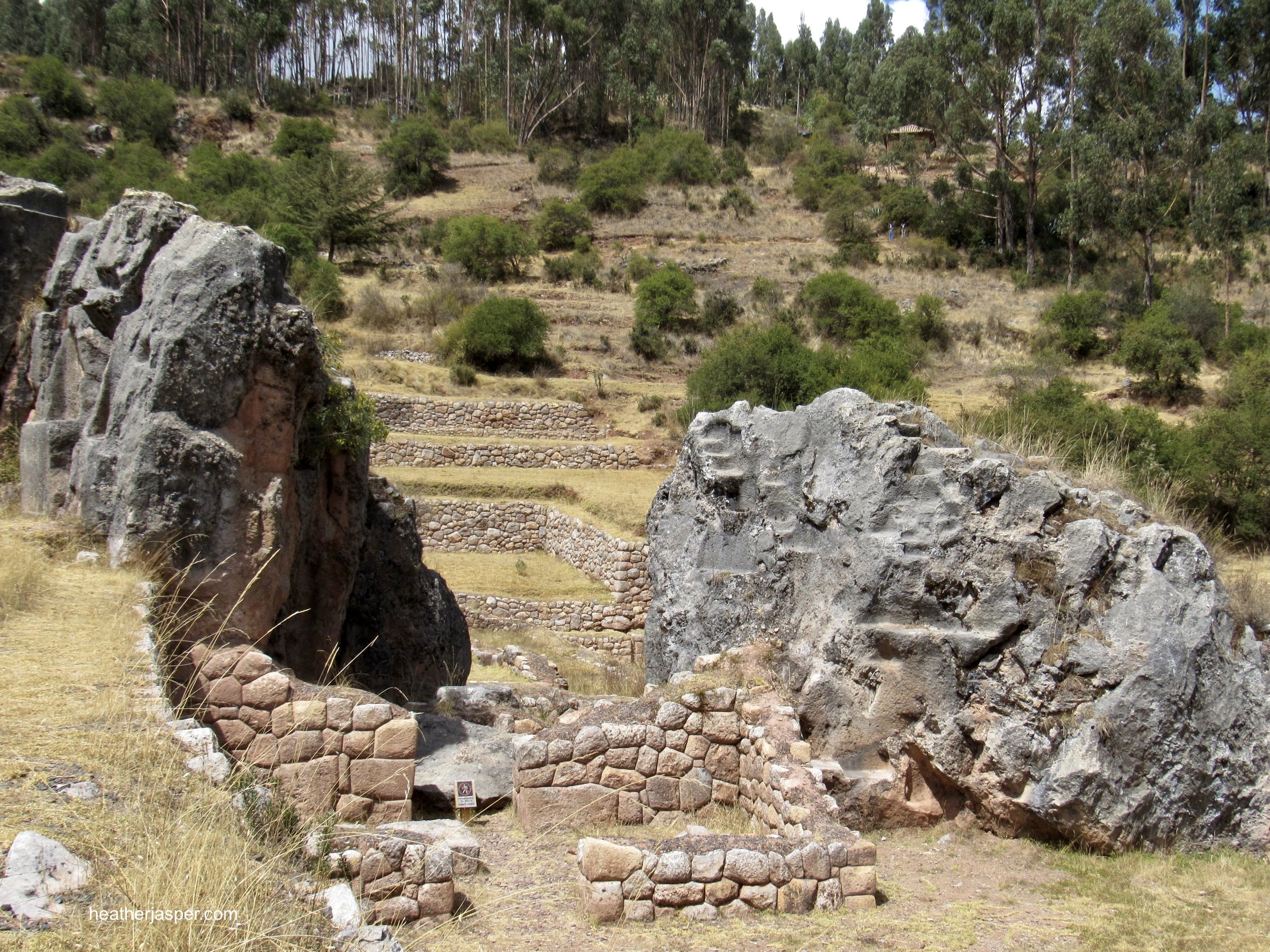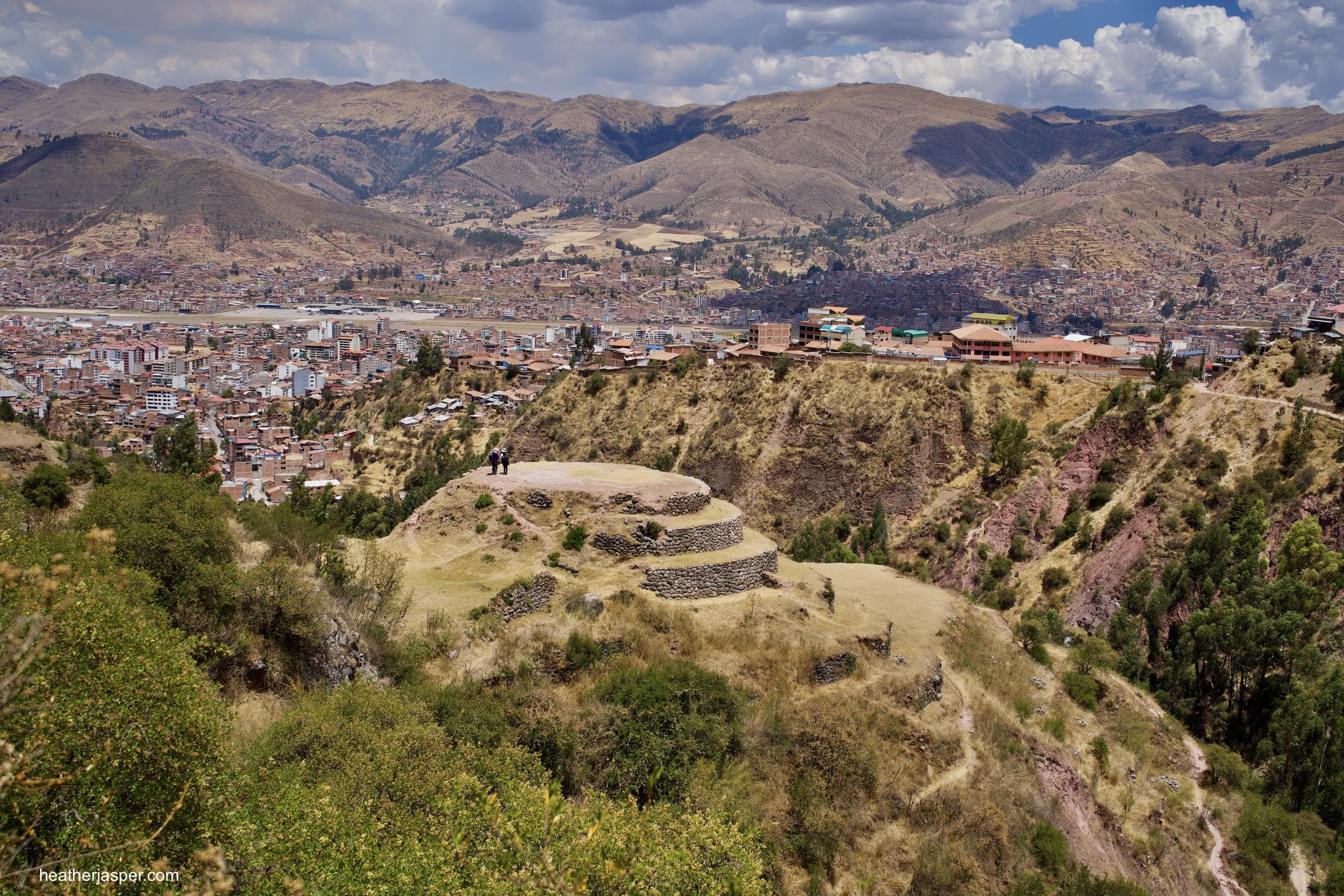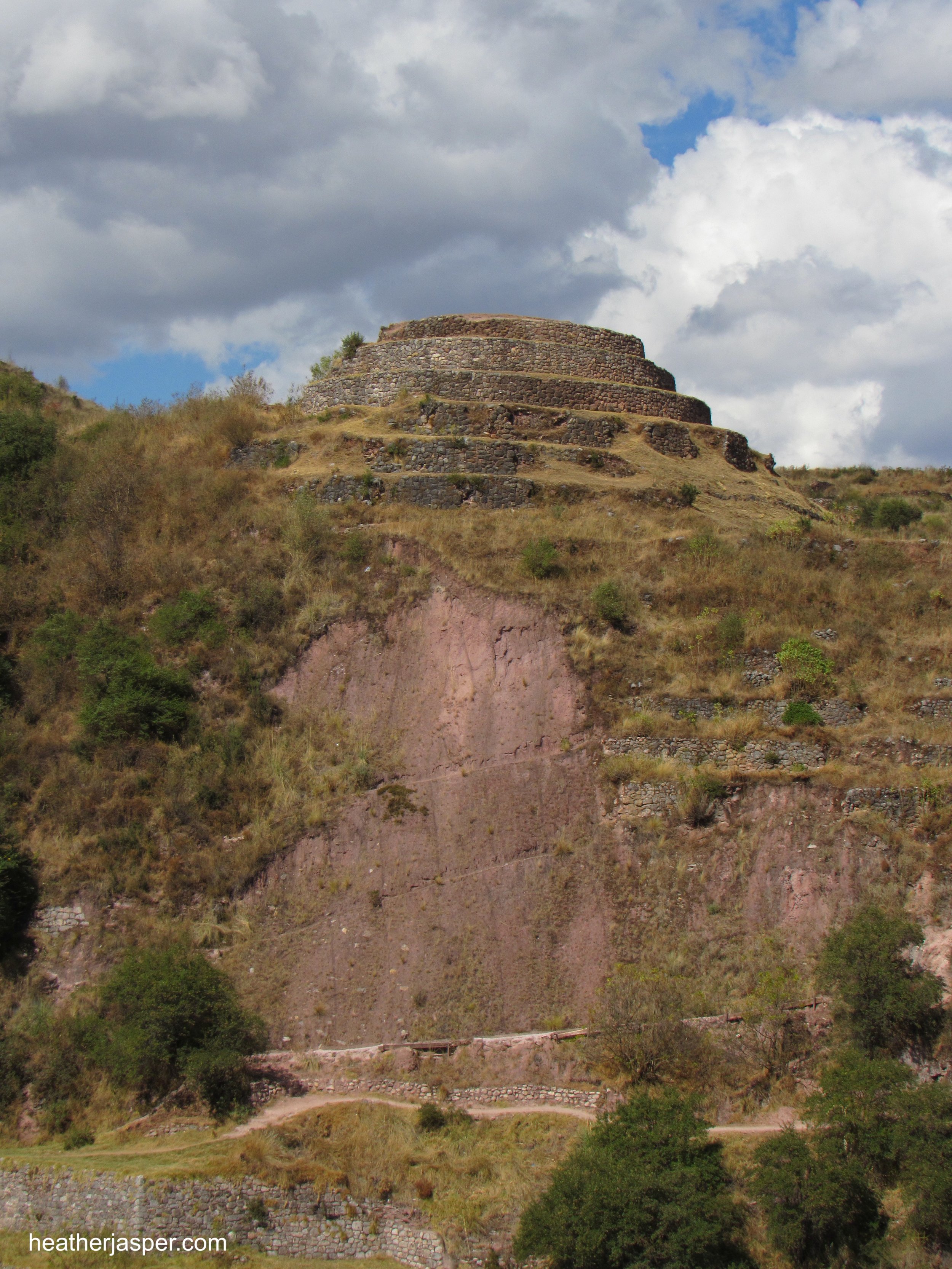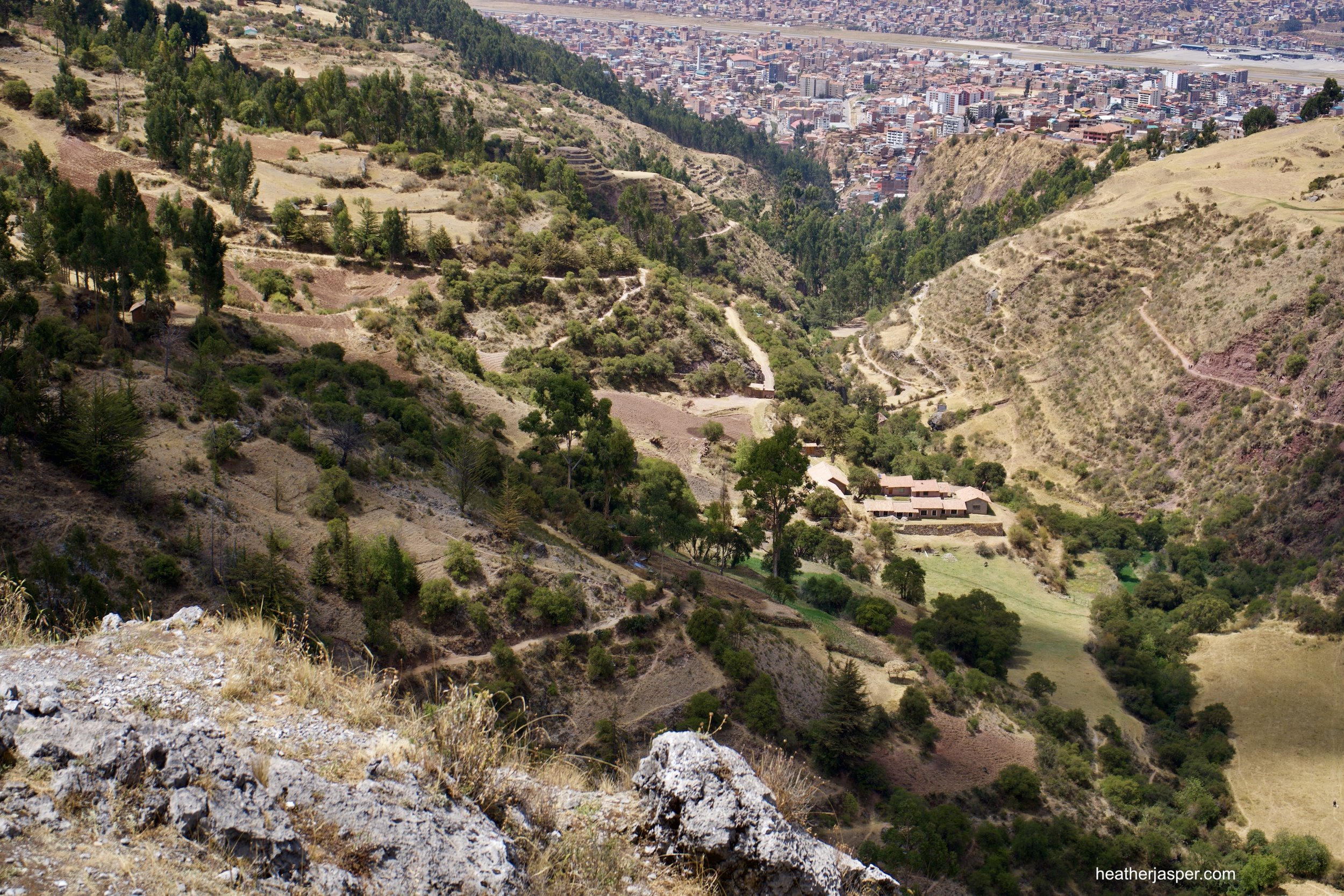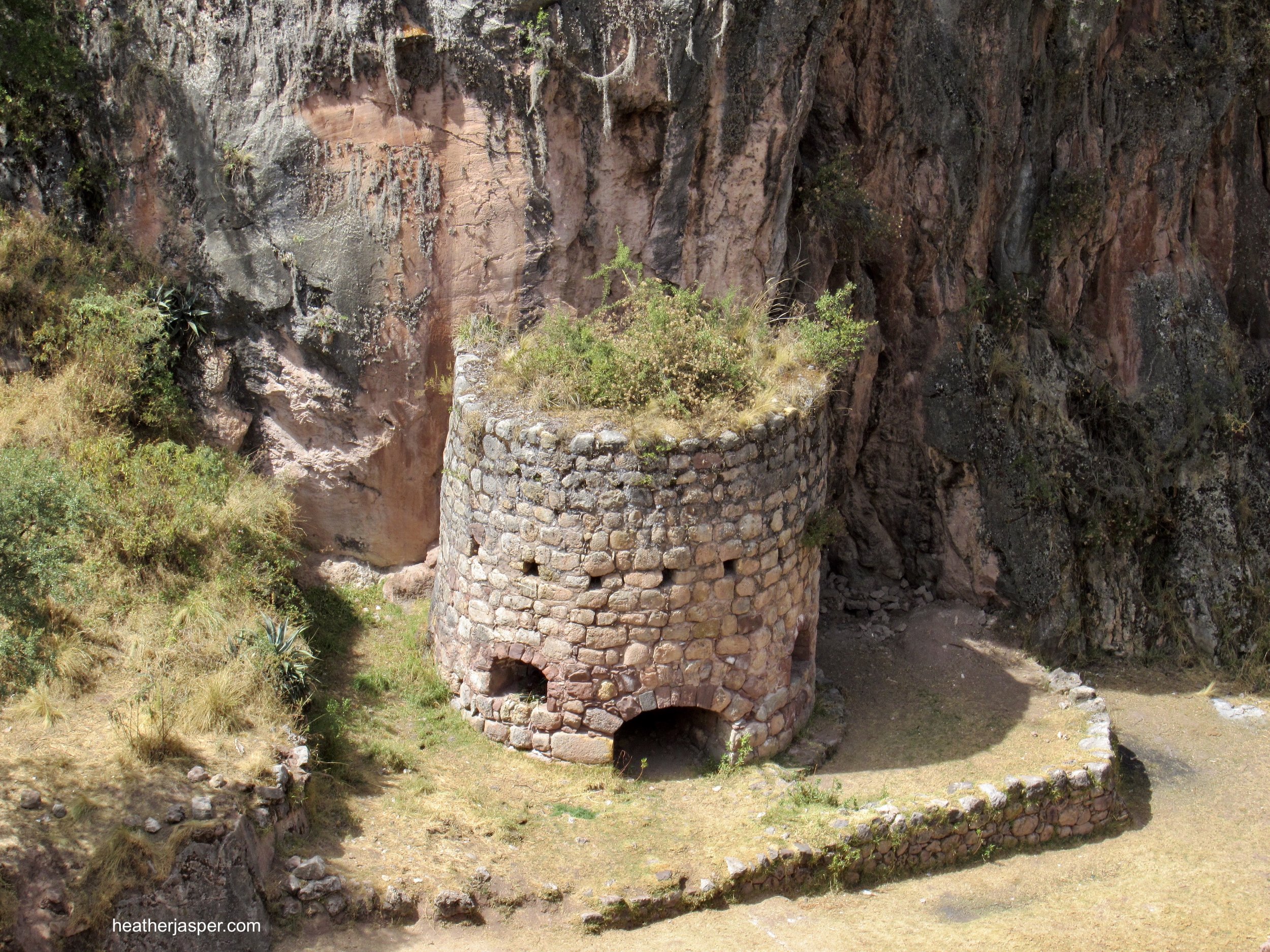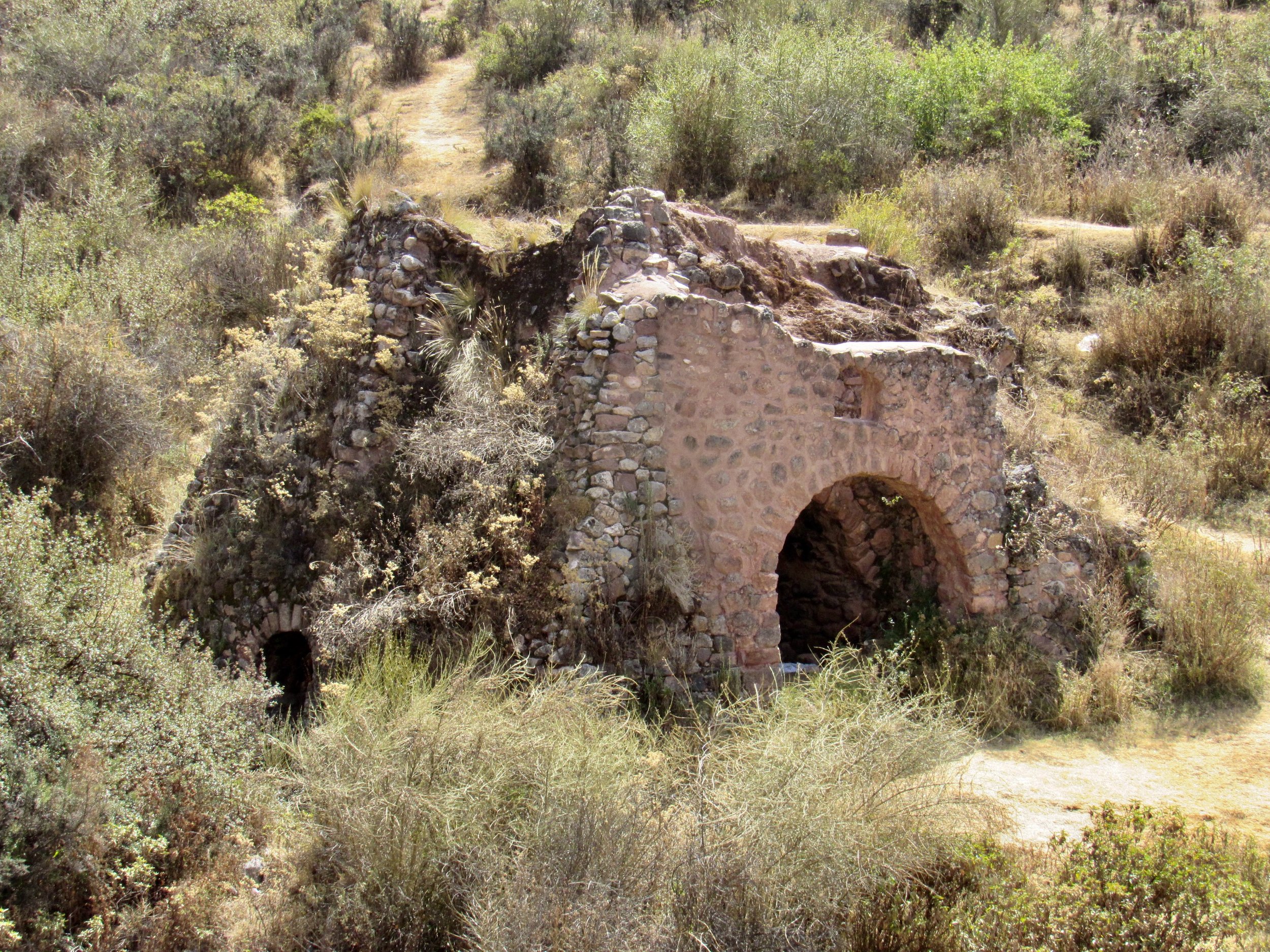Inkilltambo
The Inca ruins at Inkilltambo also include an area of pre-Inca carvings, on the right side of the photo. The terraces on the left are a popular site for picnics.
Start with the links above to read my articles about Inkilltambo published by Thrifty Nomads & Matador Network.
Inkilltambo can be reached by a short trail from near the mall, in the Magesterio neighborhood. You can also get there on a longer trail from the San Blas neighborhood up past the Temple of the Moon. The Cusco Hike Club Community has lots of information about both trails. The government made a big investment in restoration work in 2017. The signs are new, as are the roofs built over the most delicate parts of the excavations.
The terraces and buildings were built during the reign of the Inca Wiracocha as a ceremonial center. Tambo means “resting place'“ in Quechua and in general, a tambo is a place to stay along the trail from one town to another. In this case, it’s also a place to stay during ceremonies and times of the year then the Inca would celebrate holidays and festivals.
Today Inkilltambo is still used by Cusqueñians, though now it’s mostly a picnic site. I often see groups set up volleyball nets on the lower terraces, on the uphill side of the ruins. It’s a short enough walk from town to be easy to reach but just far enough to feel like you got out of the city for the day.
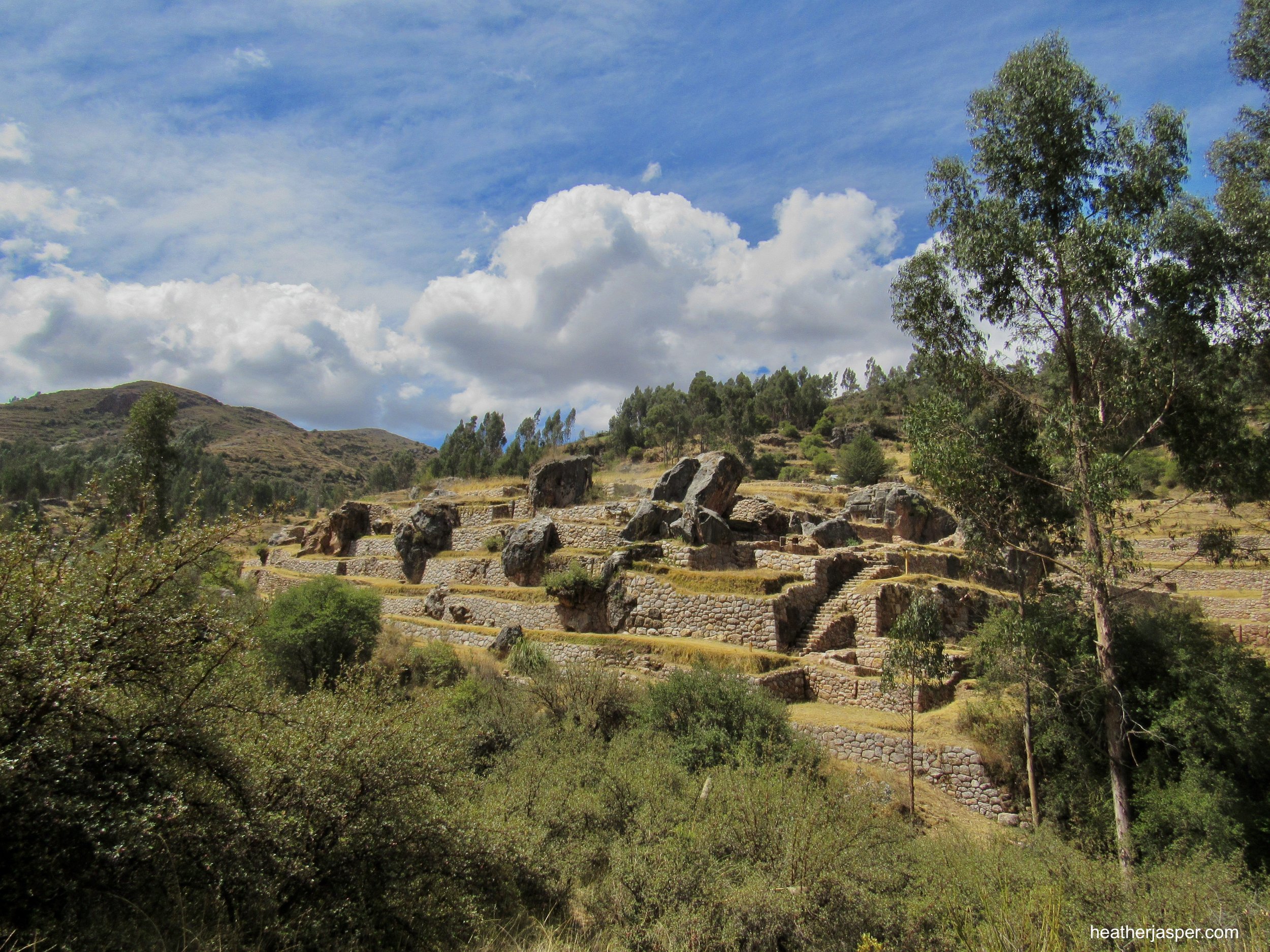
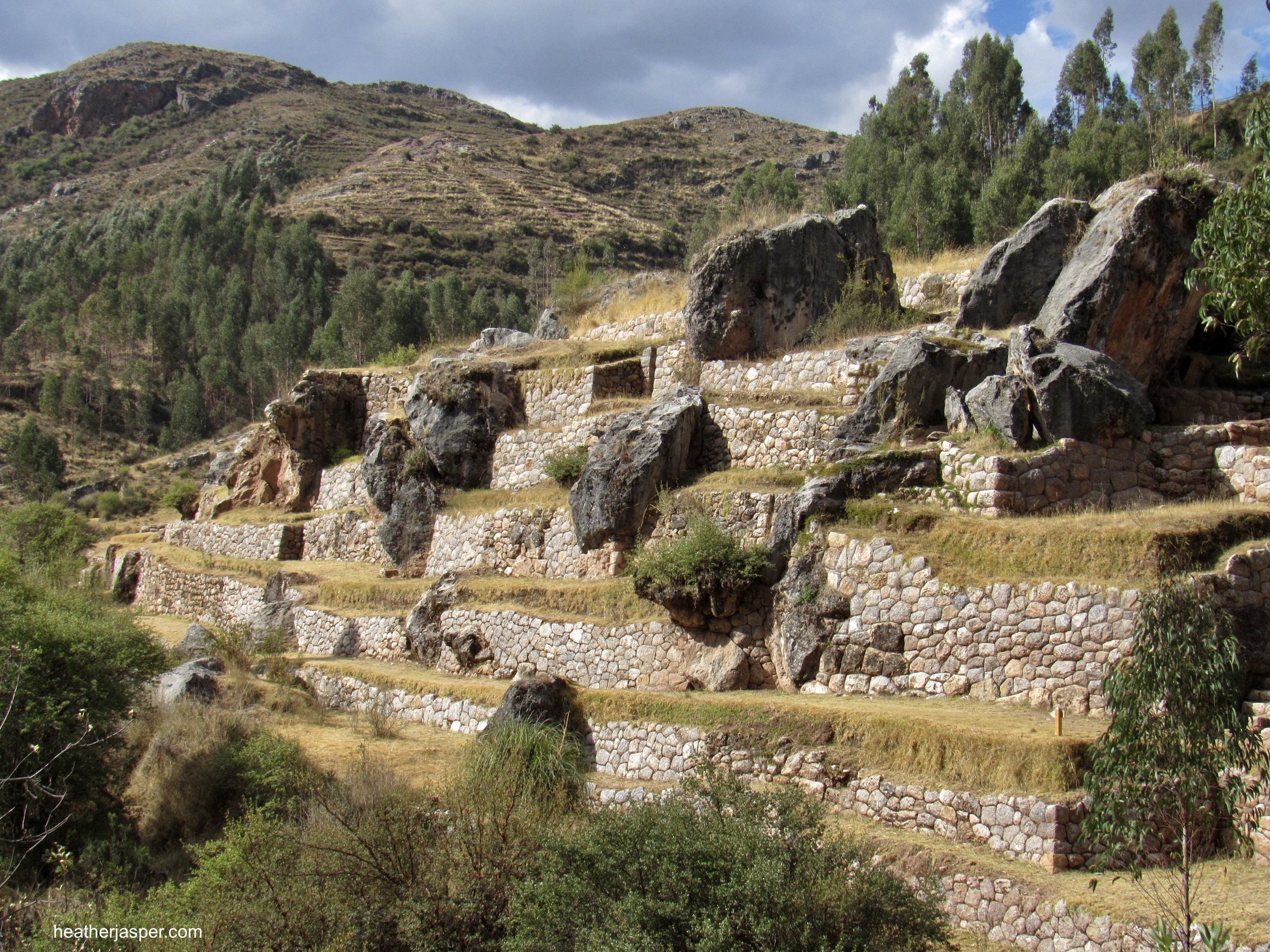

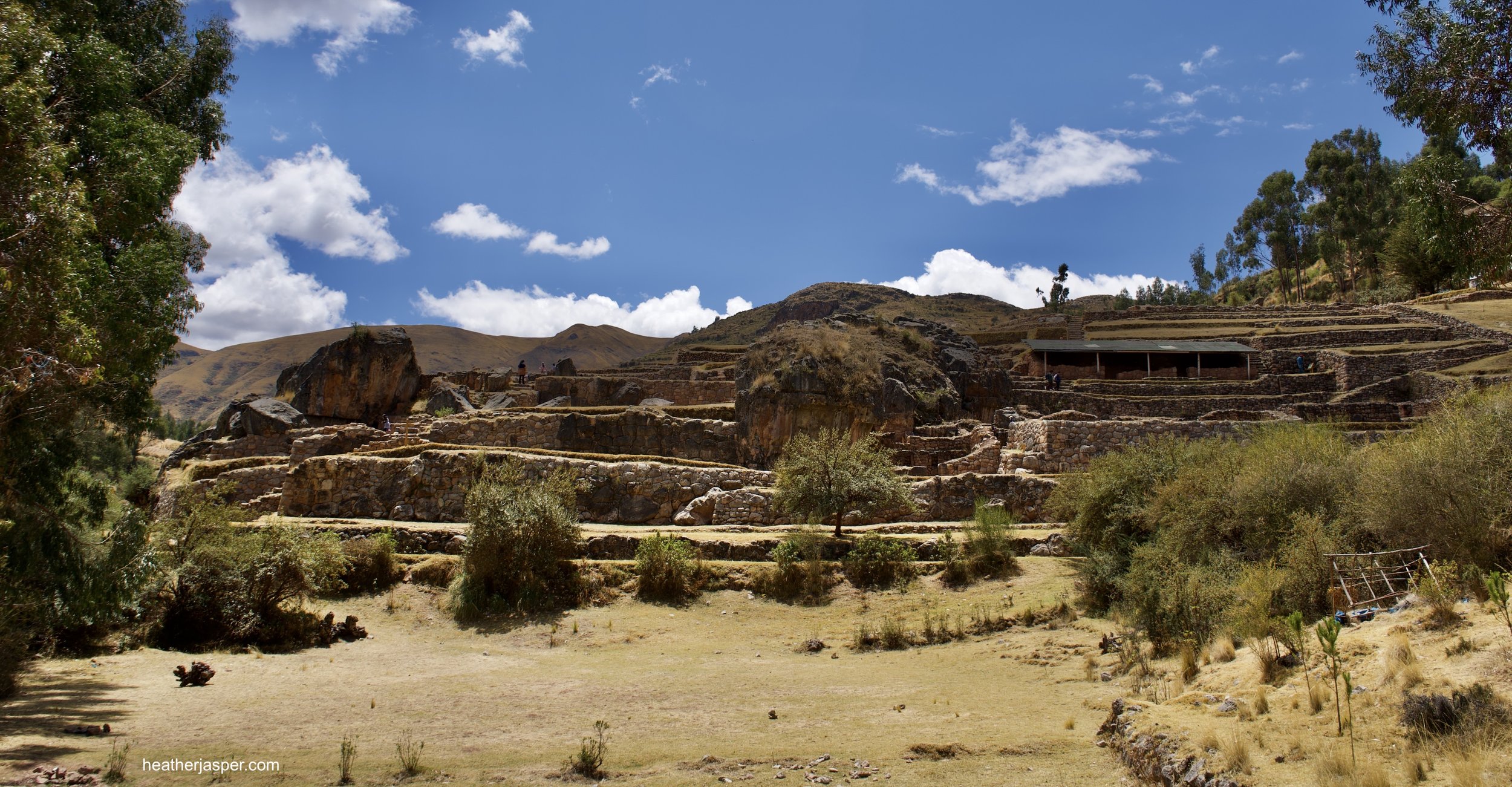
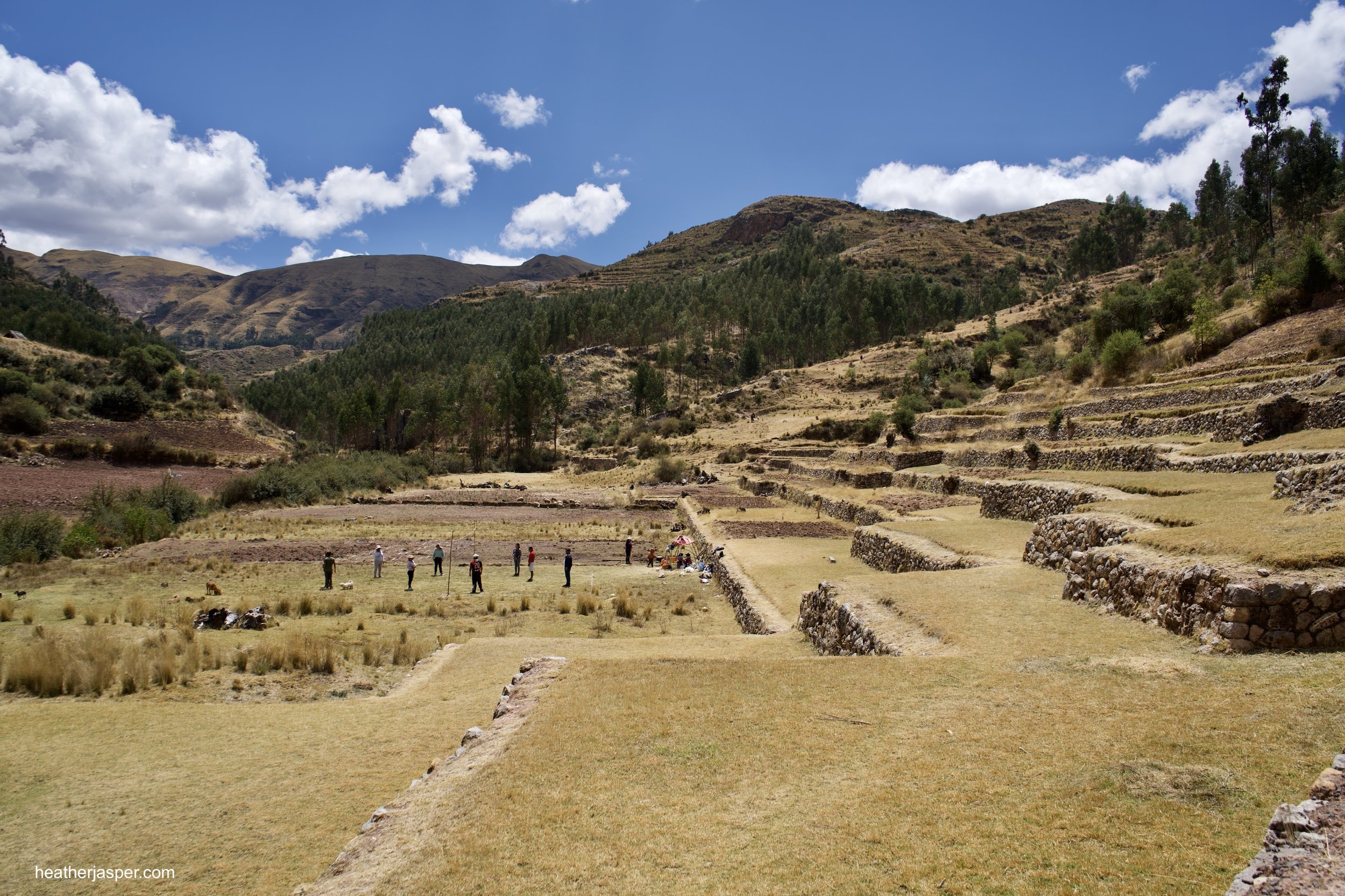
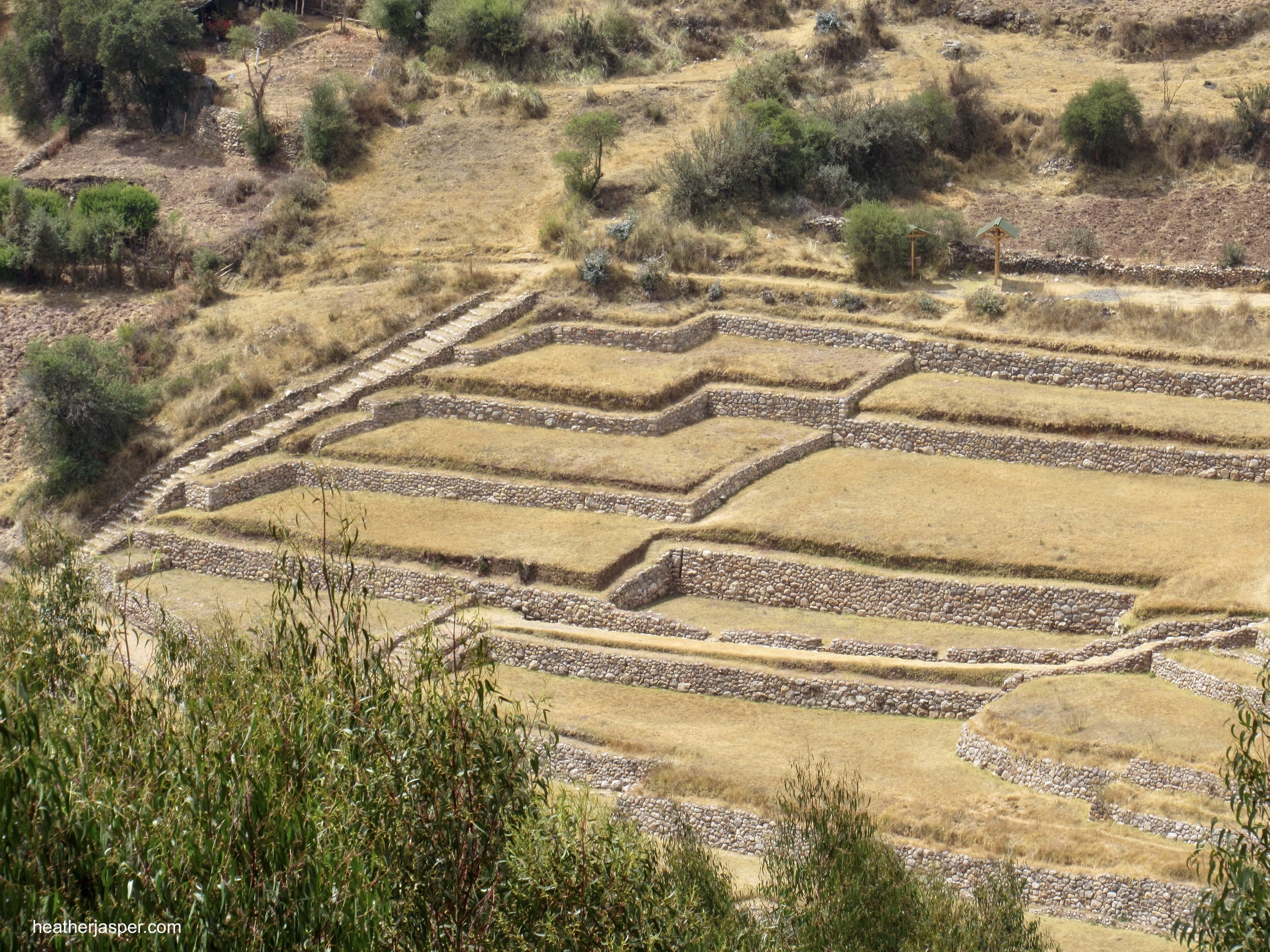
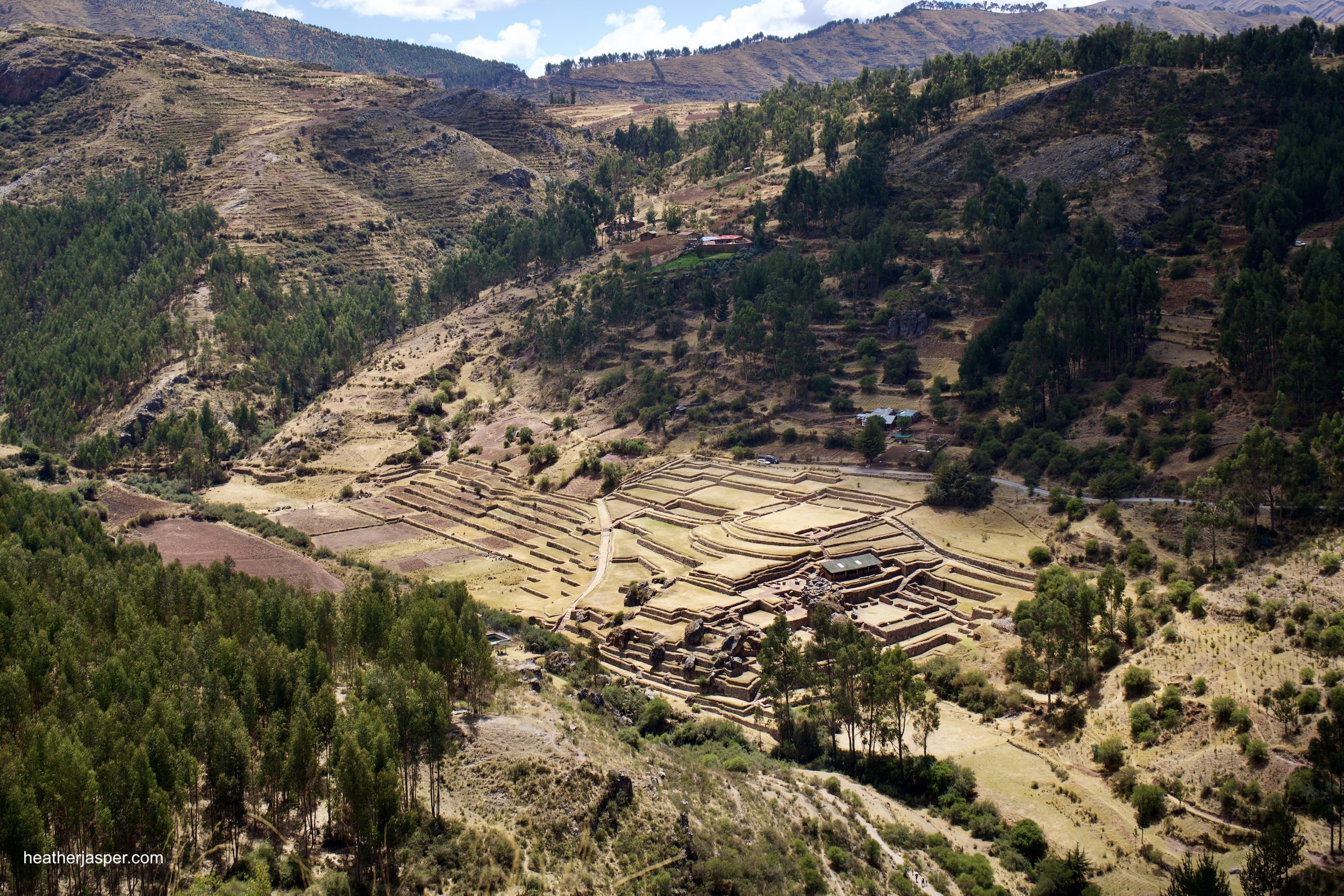
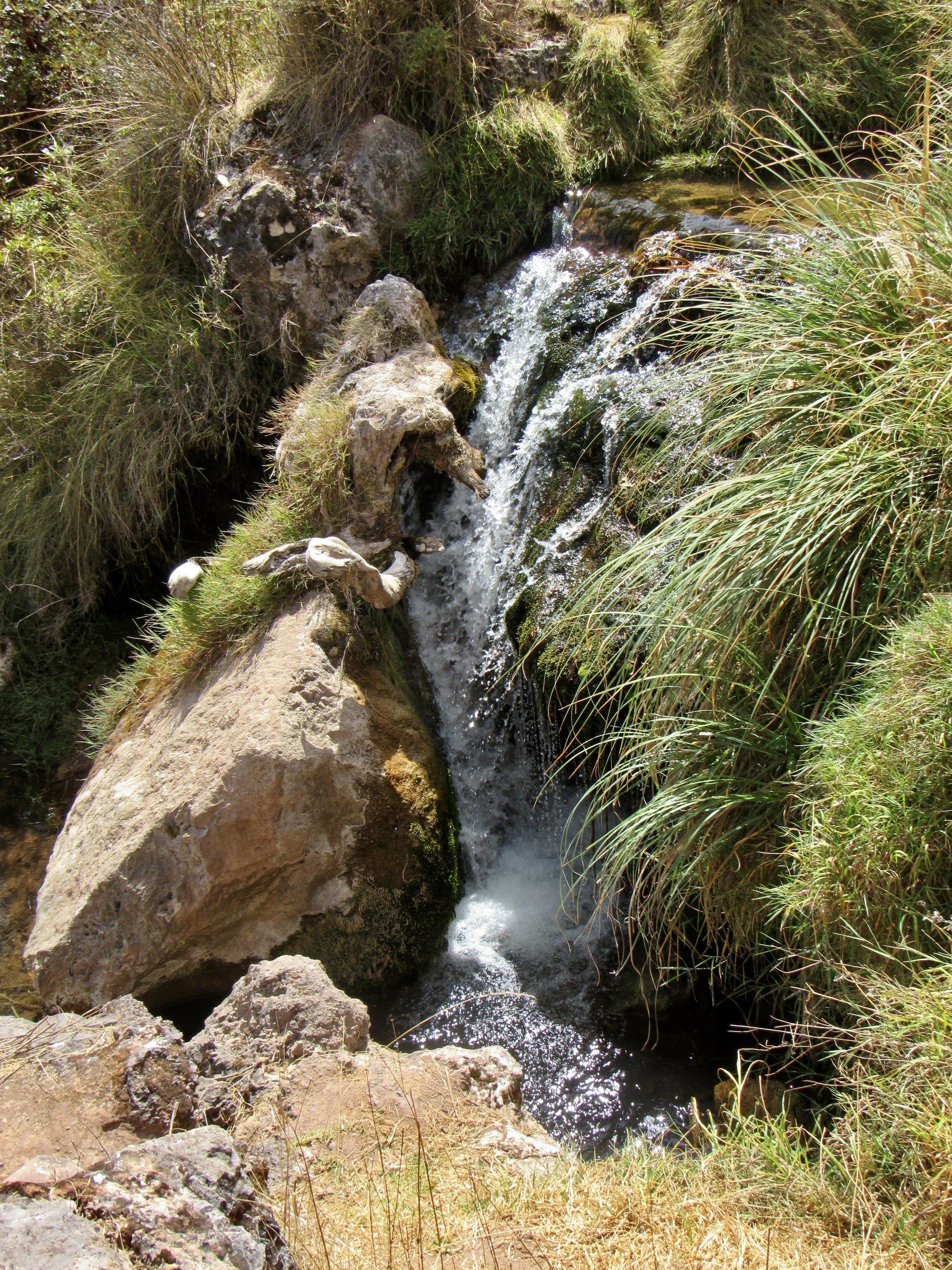

You know it’s Inca construction when you see walls like these. I love how bedrock was used in many places as part of the walls. Incan engineers didn’t tear down what was there naturally, they incorporated it into their buildings.
The interesting construction above is storage, called ccolca in Quechua. The air vents and orientation both keep the area cool and dry, even during the rainy season. Ccolca such as this were used during the Incario to store crops that were paid as taxes and also to redistribute crops to areas in need.
There is also an area with pre-Inca carvings. These were likely done by the Killke people, who were also the first to use the Temple of the Moon. The Cusco valley was inhabited thousands of years before the Incan civilization first appeared. Most Incan sites were previously used by other cultures, sometimes for centuries.
Closer to town is another interesting construction, called Huayna Choquequirao. In Quechua, “huayna” means young or small. If you’re comparing this site to the more well known Choquequirao, it certainly is much smaller.
Side note: If you’ve seen photos of (or been to) Machu Picchu, you’ve noticed that there is a smaller peak, called Huayna Picchu that is even more iconic in photos of the ruins. Machu means old and picchu means mountain. Be sure that you’re pronouncing both syllables: pic - chu. It sounds like peek - chu, kind of like Pikachu. If you skip pronouncing the first c, and make the word one syllable, it sounds very close to the Quechua word for penis. Be careful with pronunciation when trying to learn other languages!
Besides the ccolca used to store crops, the Inca also had two kilns near Inkilltambo. Like Huayna Choquequirao, these are closer to Cusco, down valley from the Inkilltambo ruins. The best artisans from all over the Incario, from Colombia down through most of Chile, were brought to Cusco. Incan culture created a huge need for ceramics and other objects to be given as presents from the Inca to the families and groups who were loyal to him. A great book on the inner workings of the Incario is “Historia del Tahuantinsuyu” by María Rostworowski de Diez Canseco. I haven’t found a copy in English, but if you can read Spanish I highly recommend it.



